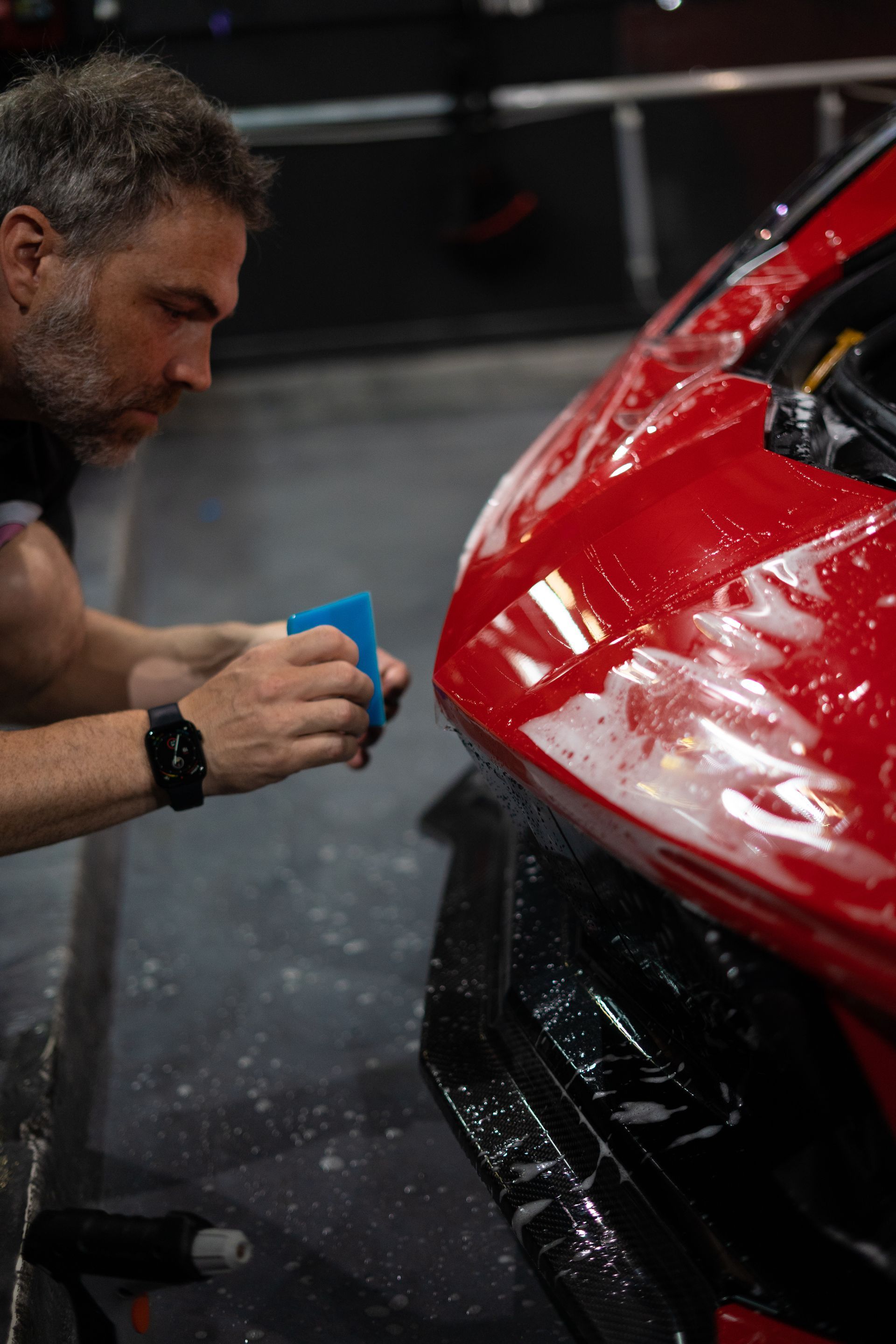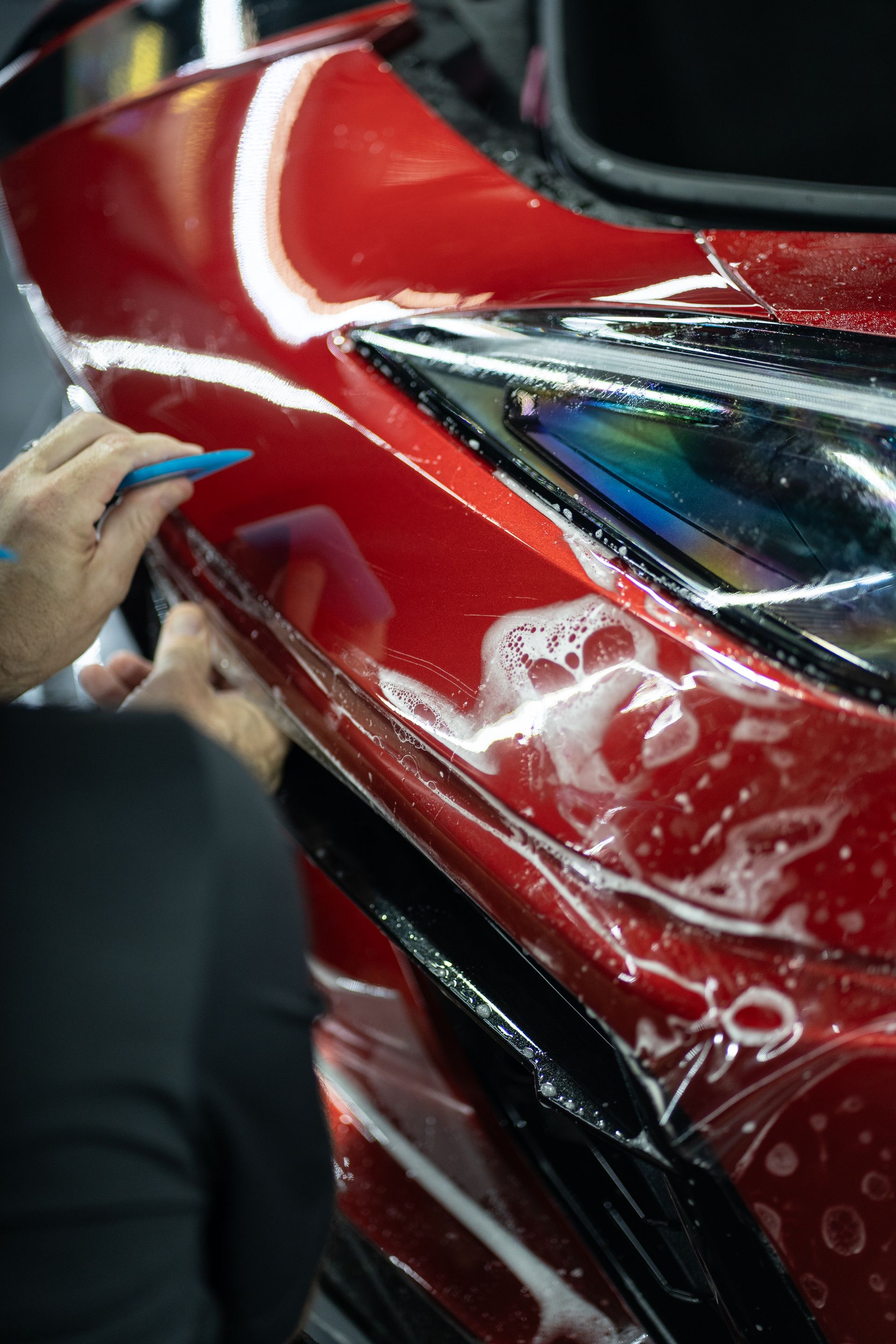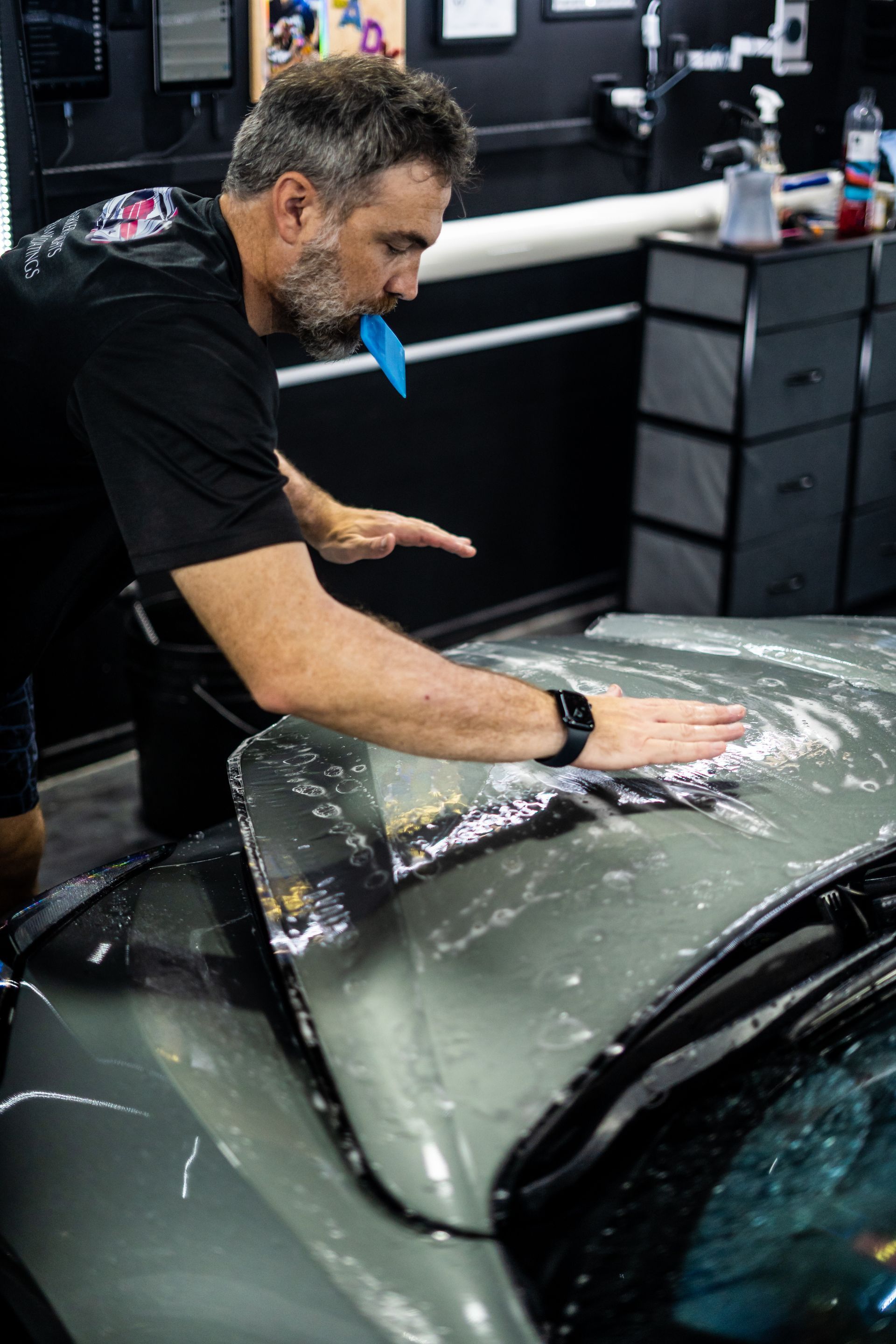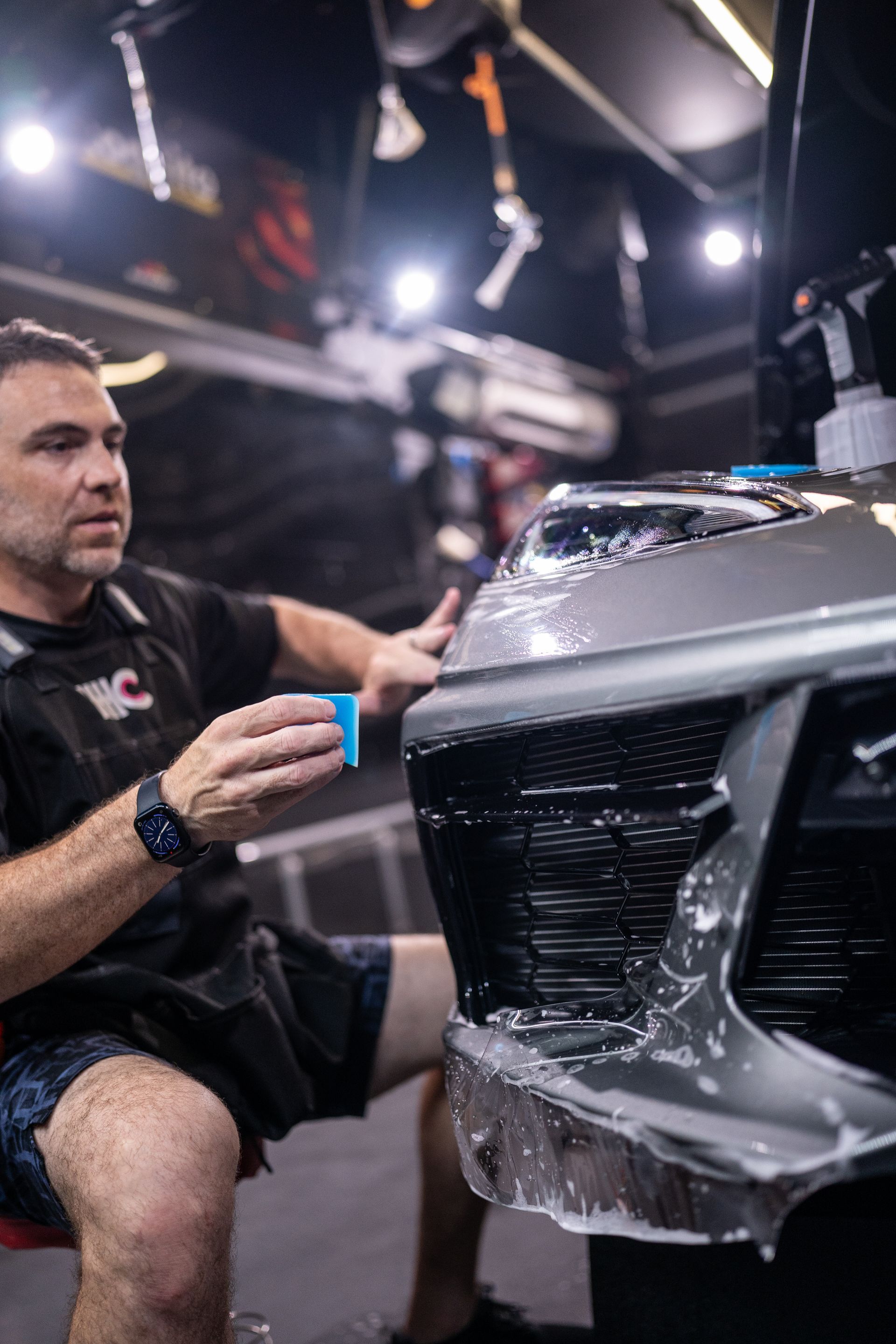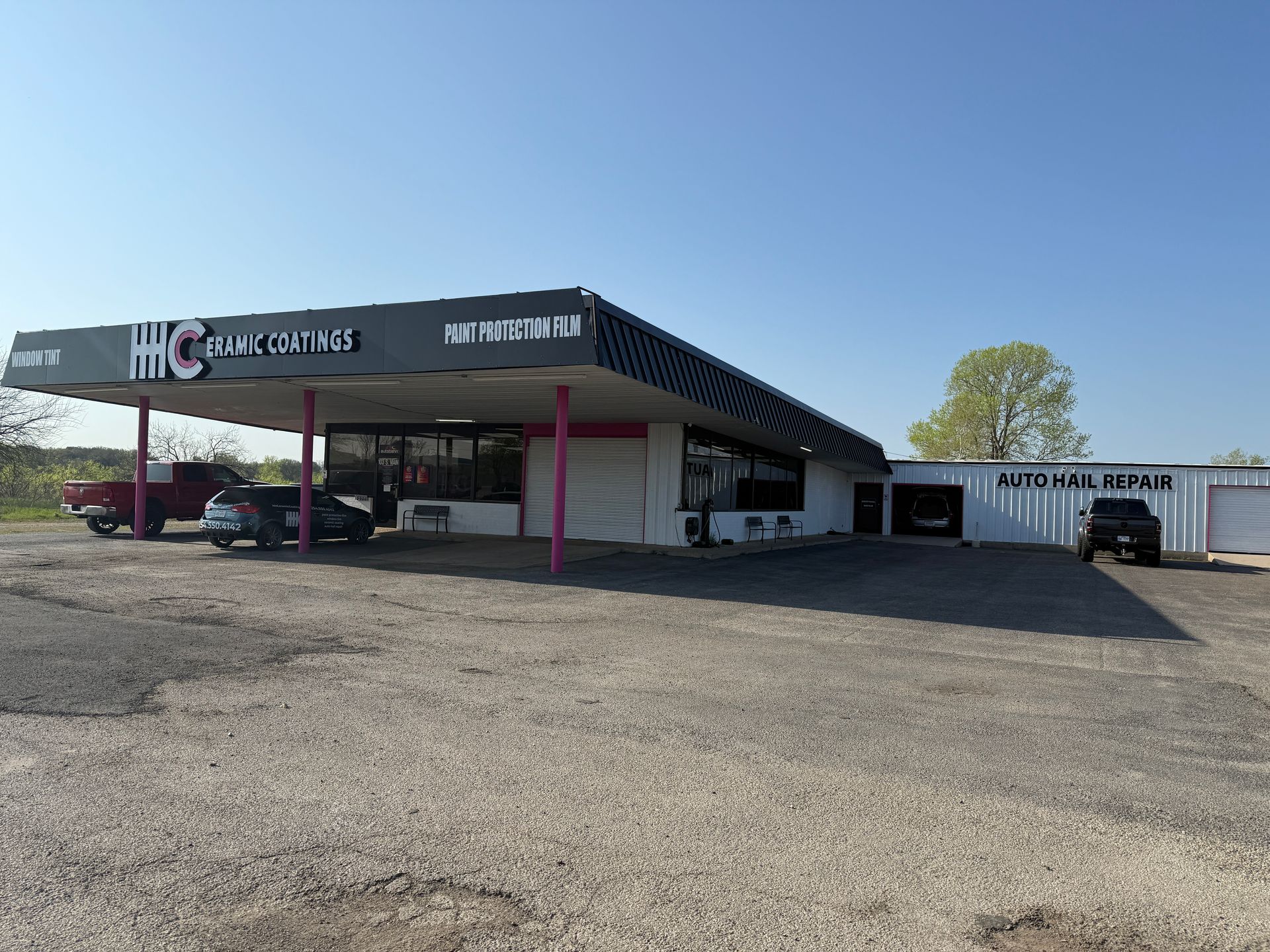CALL (254) 550-4142
When it comes to protecting your vehicle's paint, many drivers wonder just how long paint protection film can last. It’s a smart investment that shields against scratches, UV damage, and road debris, but knowing its lifespan can help you make informed decisions. Think of paint protection film like a shield for your car—while it offers solid protection, the duration it lasts can vary based on various factors.
High-quality paint protection film generally lasts between 5 and 10 years, depending on factors such as the quality of the film, environmental conditions, and driving habits. Regular maintenance, including gentle washing and avoiding harsh chemicals, as well as proper installation by skilled professionals, can significantly enhance the film’s longevity.
Average Lifespan of PPF
The typical lifespan of paint protection film ranges from 5 to 10 years, influenced by several factors, including the quality of the film, environmental conditions, and maintenance practices. High-quality paint protection films often come with advanced features that contribute to their durability, such as self-healing properties, which help reduce surface scratches and extend the lifespan significantly.
Paint protection film can last up to 10 years when properly maintained. Many users have shared their experiences, with multiple testimonials revealing successful usage of paint protection film intact for over 6 years without notable issues. These accounts indicate that when applied correctly and cared for diligently, high-quality films can meet or even exceed these expectations. It’s essential to grasp that factors such as maintenance routines are paramount. Regular washing with non-abrasive soaps can enhance the film's longevity. Avoiding harsh chemicals and utilizing gentle drying techniques with microfiber towels can prevent wear and tear.
Environmental impacts also play a crucial role in determining paint protection film longevity. For example, vehicles parked in shaded areas or garages tend to experience less wear compared to those exposed to extreme weather conditions or high levels of pollution. Additionally, one's driving habits significantly influence how long paint protection film lasts. Engaging in aggressive driving—especially through gravelly terrain or heavy debris—can pose risks to the film's integrity. Exercising cautious driving behavior not only protects your vehicle but also helps preserve the condition of your paint protection film.
Weather and Environmental Impact
Extreme climates can significantly affect the longevity and performance of paint protection film (PPF) on vehicles. While PPF is designed to shield your car's paint from environmental damage, conditions like intense heat, freezing cold, humidity, and pollution can still take a toll. Here’s a breakdown of how different climates impact PPF and what can be done to help maintain its durability.
- Impact of High Heat and UV Exposure: In areas where summer temperatures exceed 90°F, high heat and UV rays weaken the adhesive properties of paint protection film. Prolonged sun exposure can also cause the film to develop a yellowish tint, reducing its clarity and effectiveness. This fading and weakening can necessitate more frequent maintenance or replacement to ensure consistent protection.
- Challenges of Freezing Temperatures: Cold climates can make paint protection film more brittle, especially when temperatures regularly dip below freezing. Freeze-thaw cycles can lead to cracking and peeling of the film, which compromises its protective qualities. This brittleness can be a particular issue during the winter, requiring closer inspection and care.
- Effect of Humidity and Heavy Rainfall: In areas with humidity levels of 60% or higher, moisture can foster mold and mildew growth on paint protection film, impacting both appearance and adhesion. Heavy rain and humidity can also allow water to seep under the film, leading to bubbling and lifting at the edges. Frequent inspections and timely cleaning are important in these regions to maintain the film’s integrity.
- Influence of High Pollution Levels: Vehicles in high-pollution areas experience chemical reactions between environmental pollutants and the film’s surface. Acid rain and industrial fallout can degrade the paint protection film, causing discoloration and reducing its effectiveness. This degradation can accelerate the need for replacement by 2-3 years, making regular maintenance a priority in polluted environments.
Staying aware of how different environmental factors affect your PPF can help you plan for proper care and upkeep. With the right maintenance, you can maximize the film’s lifespan and keep your vehicle looking its best in any climate.
Ultraviolet Light Exposure
UV light exposure can cause significant damage to paint protection film over time. Continuous sunlight bombards the film, leading to yellowing and a weakening of its protective qualities. Studies show that when a paint protection film is subjected to around 2,000 hours of direct UV exposure, it can start to lose clarity and adhesion. This means that the aesthetic issue of yellowing isn't just skin deep; it fundamentally alters how well the paint protection film protects your vehicle's paint.
To maintain your paint protection film for as long as possible, consider measures like garaging your vehicle whenever it's not in use or employing a car cover designed with UV protection when parking outdoors. Moreover, regular washing with non-abrasive soaps can help keep dirt and pollutants from breaking down the film’s protective properties. Additionally, applying PPF-friendly sealants can create an extra barrier against UV rays and enhance durability. You might also consider ceramic coating for better protection. These proactive steps can substantially reduce the risks posed by sunlight, extending your investment's lifespan significantly.
Quality of the Protective Film
When considering paint protection film, the adage "you get what you pay for" rings especially true. The quality of the PPF you choose can make a significant difference in its performance and longevity on your vehicle. For instance, high-end paint protection films come equipped with cutting-edge features designed to combat the common wear and tear that any vehicle will face over time. These advanced paint protection films include self-healing properties, which enable them to smooth out minor scratches and swirls when exposed to heat. This characteristic preserves your car's visual appeal and extends the lifespan of the protection itself.
One notable advantage of investing in high-end paint protection films is their superior durability—promising up to ten years compared to just two to five years for low-end alternatives. Despite the steeper initial cost, many car owners find these premiums worthwhile when weighed against the longevity and enhanced protection they receive. Spending more upfront can save money on future repairs while keeping your vehicle looking newer longer.
It's also essential to consider how well these films resist UV radiation. High-end PPFs generally offer robust UV protection that combats fading, while lower-quality films provide moderate to low shielding. This difference can lead to significant consequences for your vehicle’s paint; prolonged sun exposure not only dulls colors but can cause deeper damages requiring costly repainting. While selecting a premium product is critical, successful use of these films hinges on employing proper techniques during installation.
Proper Application Process
Ensuring your paint protection film performs its best requires a thorough understanding of the application process. Even the finest paint protection film can fall short if not properly installed, highlighting the importance of professional application for optimal results.
- Surface Preparation: The first step in paint protection film application is meticulous surface preparation. Any dust, dirt, or small imperfections left on the vehicle's surface can compromise the film’s adherence, leading to premature wear. Proper preparation can extend the lifespan of the film by up to 50%.
- Environmental Conditions: Applying PPF in the right environment is essential for a strong bond. The ideal temperature range is between 60°F and 80°F (15°C to 27°C), which allows the adhesive to flow smoothly and minimizes the risk of defects like bubbling or peeling. A clean, debris-free workspace further ensures that no stray particles get trapped under the film.
- Use of Heat Tools: During installation, a heat gun is a valuable tool for shaping the film around curves and edges. Gentle heat boosts adhesion, reducing the risk of lifting along edges, and can enhance durability. This step allows the film to conform to the unique contours of the vehicle's body.
- Proper Handling of Film: Even premium-grade paint protection film can be compromised by poor handling, much like how a fine piece of art can lose its appeal if placed in an unstable frame. Careful handling prevents damage and ensures that the film’s appearance and protective qualities are preserved throughout its lifespan.
- Post-Installation Maintenance: After installation, proper maintenance plays a key role in maximizing paint protection film durability. Avoid automatic car washes with abrasive brushes; instead, opt for hand washing with soft materials to protect the film. Regular cleaning helps prevent dirt buildup and enables early detection of wear or other issues.
By following these application and maintenance practices, you can ensure that your paint protection film not only enhances your vehicle’s appearance but also provides lasting protection.
Maintenance and Care for Prolonged Durability
Regular maintenance is key to extending the life of paint protection film. It's like nurturing a plant; if you care for it, it thrives. Routine cleaning and care can significantly impact longevity, while neglect can lead to unwanted wear and tear. If you've invested in paint protection film, you're likely hoping for that smooth, pristine finish to last as long as possible. Let’s look at some practical tips that will help you achieve just that.
Tips for Maintaining Paint Protection Film
- Regular Washing: One of the simplest ways to care for your paint protection film is through regular washing. Aim for a weekly wash with non-abrasive soaps that won't strip the film of its protective properties. Using a soft sponge or cloth helps avoid scratches or damage during cleaning. Remember, cleanliness isn't just about looks—it's about protecting your investment.
- Avoid Harsh Chemicals: Steer clear of products containing alcohol or petroleum-based compounds. These harsh chemicals can break down the adhesive bond of the film, leading to bubbling or peeling over time. Consider this: just like you would avoid using strong detergents on delicate fabric, give the same consideration to your paint protection film.
- Gentle Drying: After washing, it's important how you dry the car as well. Use soft microfiber towels instead of abrasive materials; these help prevent micro-scratches that can accumulate and diminish the paint protection film’s durability. By gently patting the surface dry rather than rubbing vigorously, you preserve more of its integrity.
- Inspect and Repair: Periodic inspections play a critical role in maintaining your paint protection film. Every six months or so, take a close look at your vehicle’s film for any signs of damage or peeling edges. Addressing problems early can help you avoid more significant issues down the line. Even minor repairs when caught early, can extend lifespans substantially.
Car owners who follow these maintenance practices often find their paint protection film lasts closer to that sought-after 10-year mark. Though weather conditions can vary dramatically across regions, establishing a routine will set you up for success regardless of where you live. As you can see, regularly caring for your paint protection film isn't just about keeping up appearances; it helps ensure that your car remains protected from the elements and preserves its aesthetic value for years to come.
#1 Paint Protection Film Installers in Harker Heights, TX
Protect your vehicle with the
top-tier paint protection film services from Harker Heights Ceramic Coatings. As the #1 paint protection film installers in Harker Heights, TX, our expert team is dedicated to keeping your vehicle’s paint pristine, shielding it from chips, scratches, and environmental damage. With our high-quality paint protection films, you can trust in a finish that stays sleek and resilient through every mile. Discover how Harker Heights Ceramic Coatings can provide unmatched protection for your car—schedule your consultation today and keep your investment looking its best for years to come! Call us at (254) 550-4142 to get started!

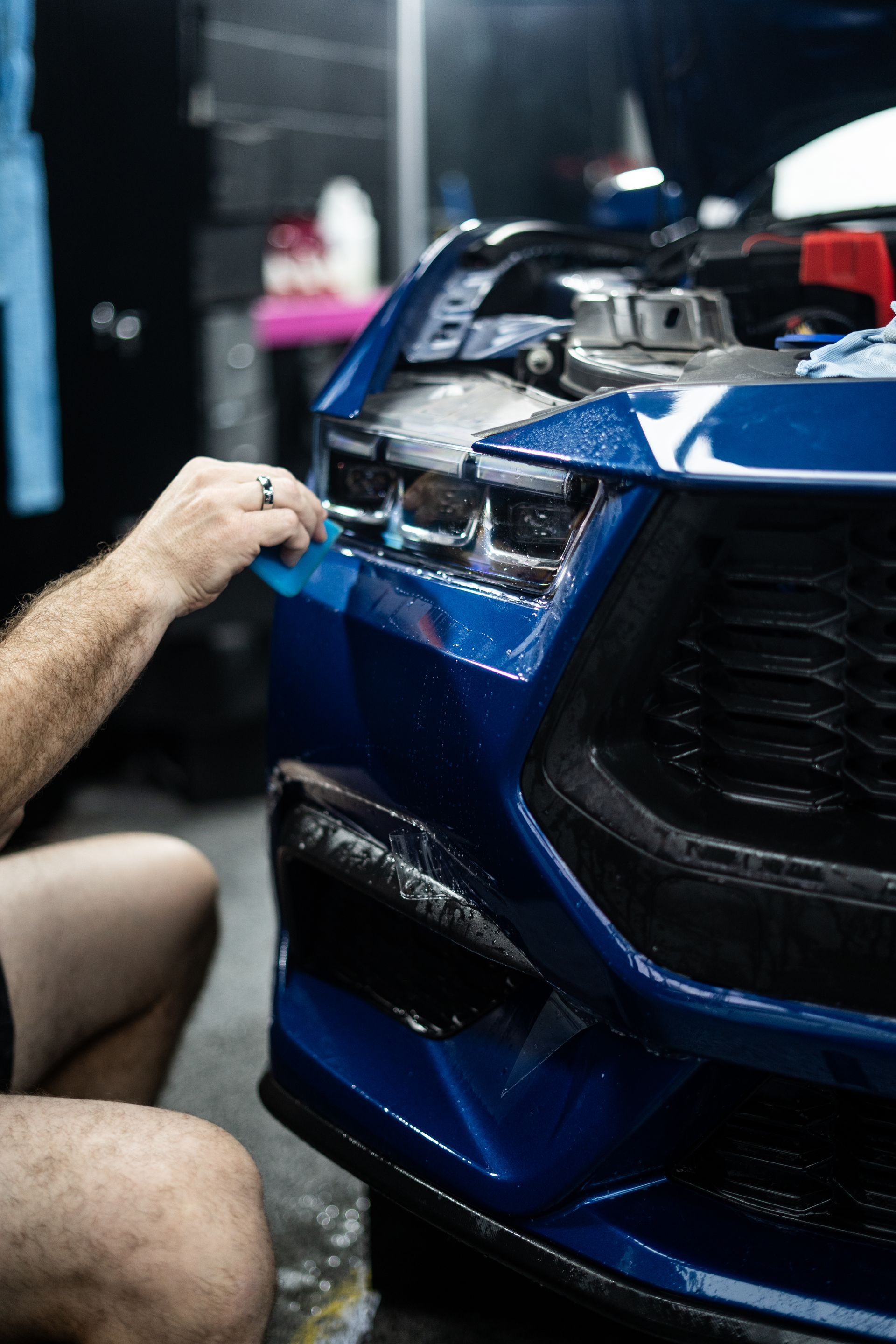
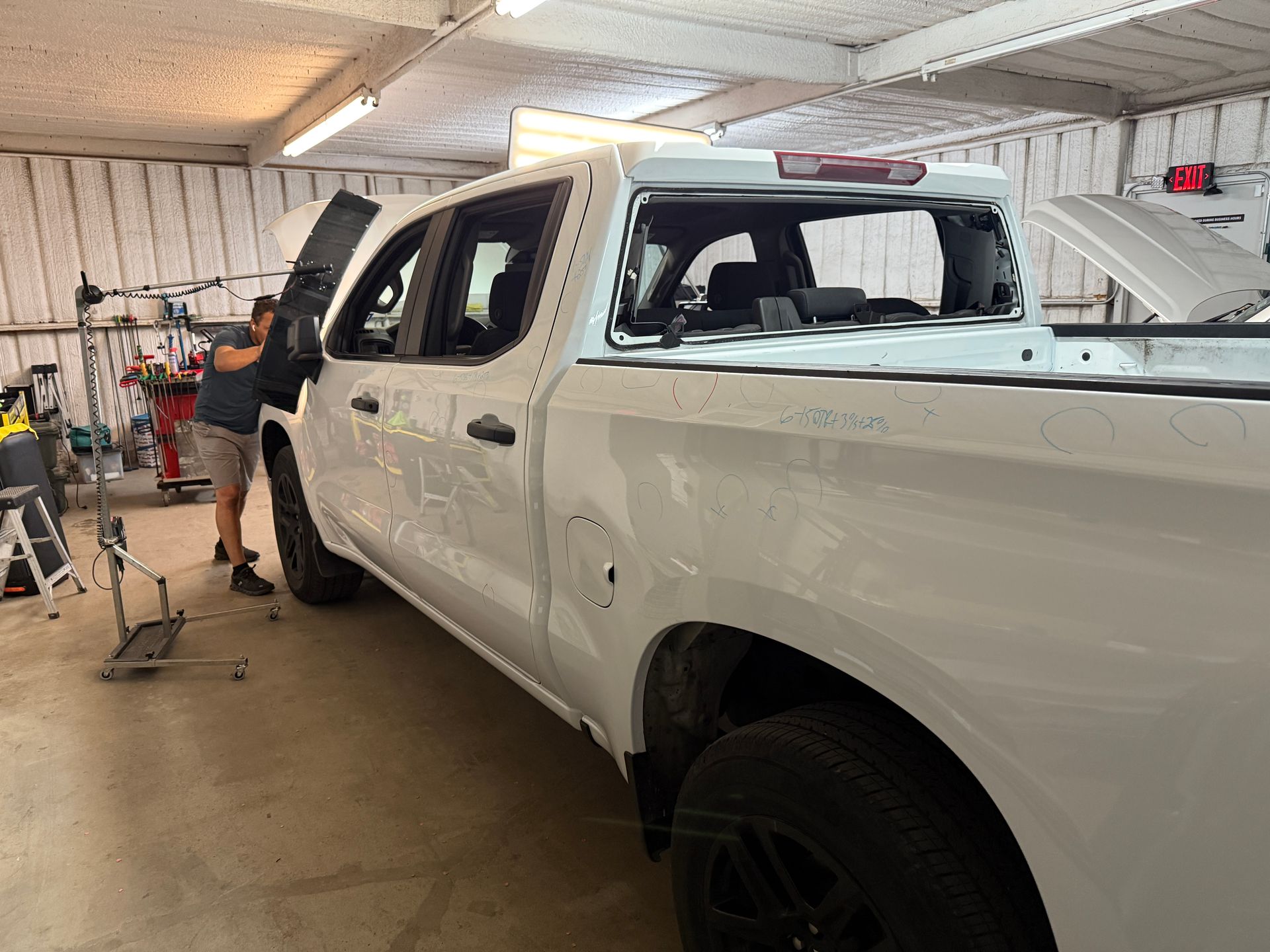
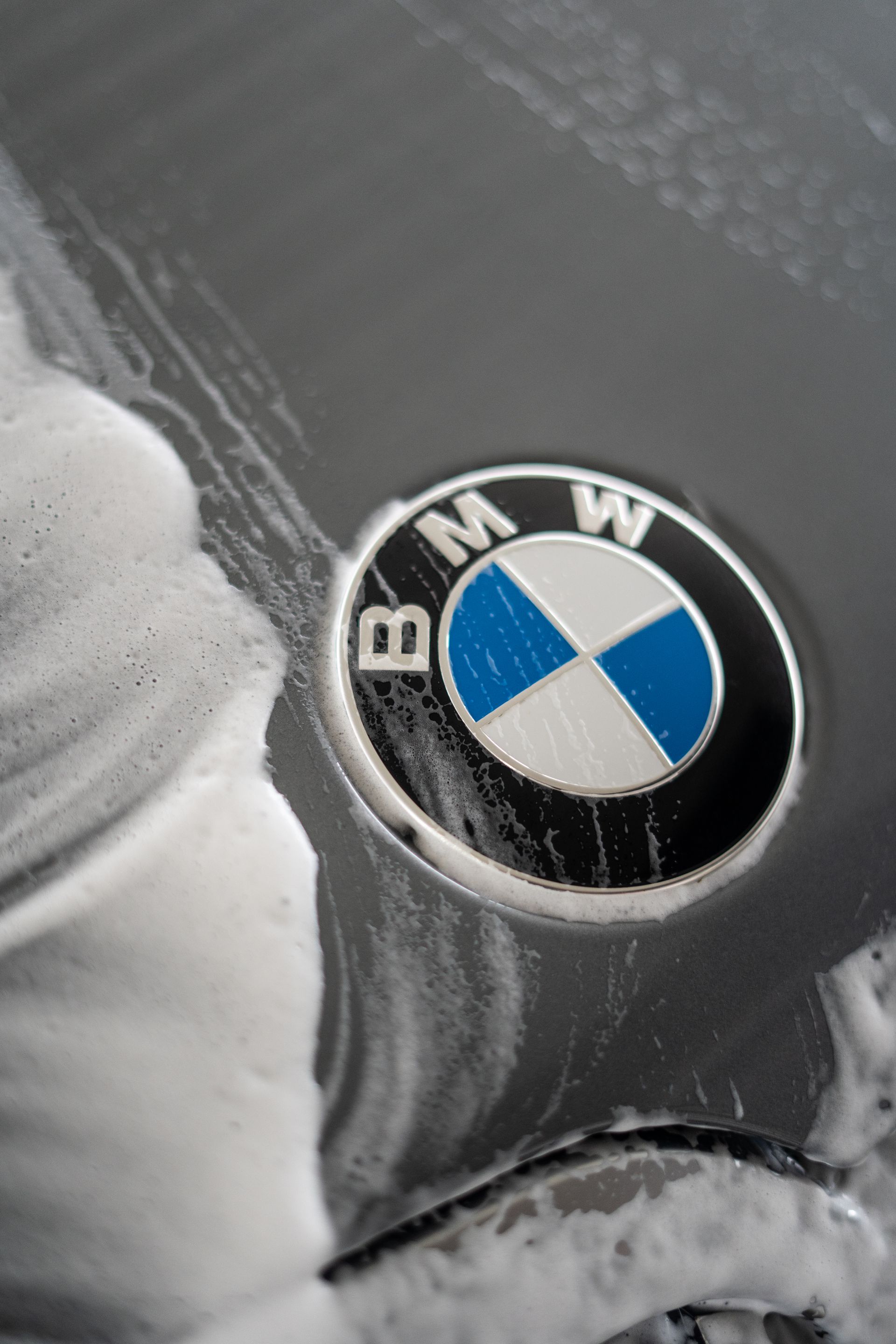
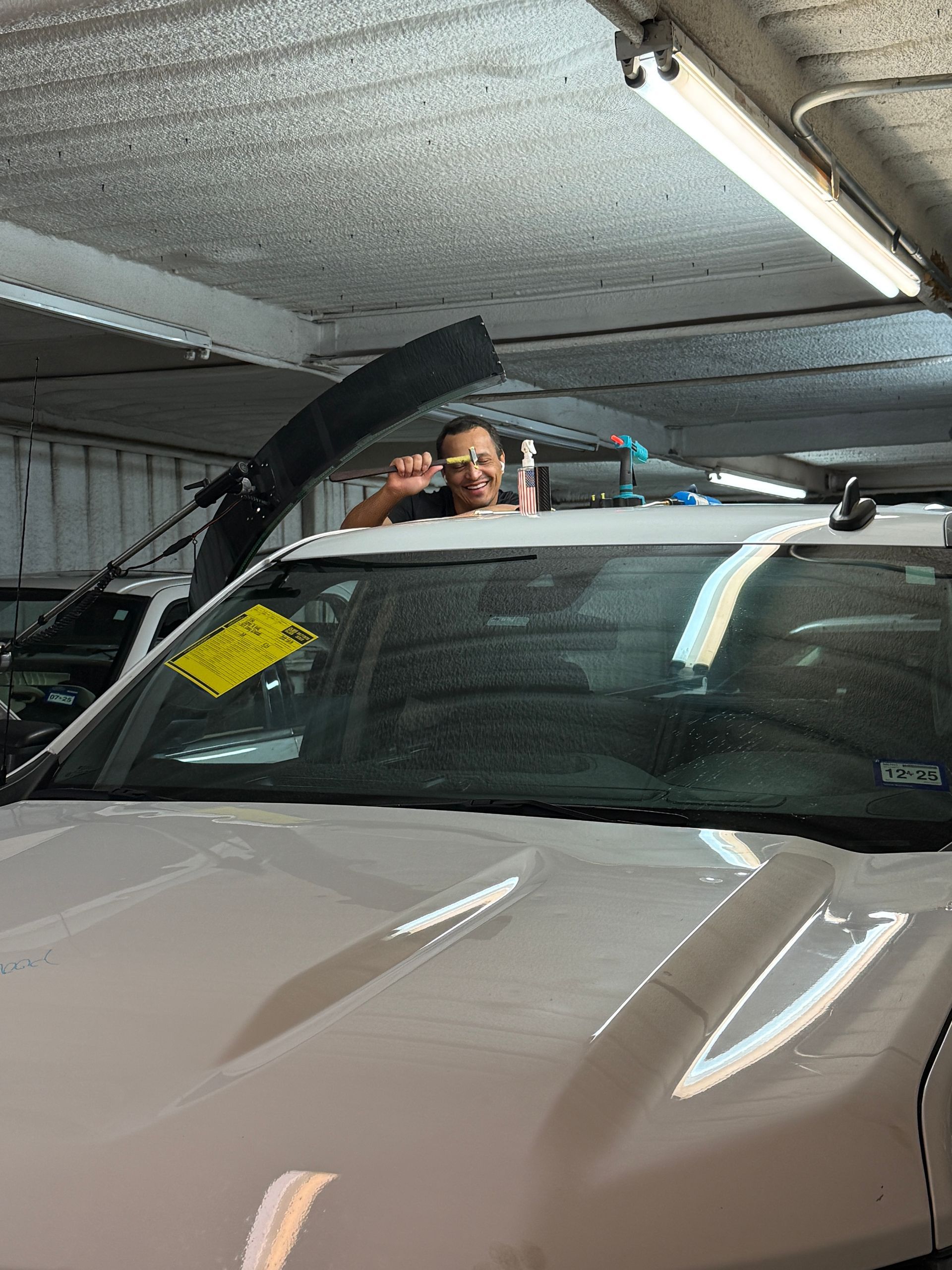
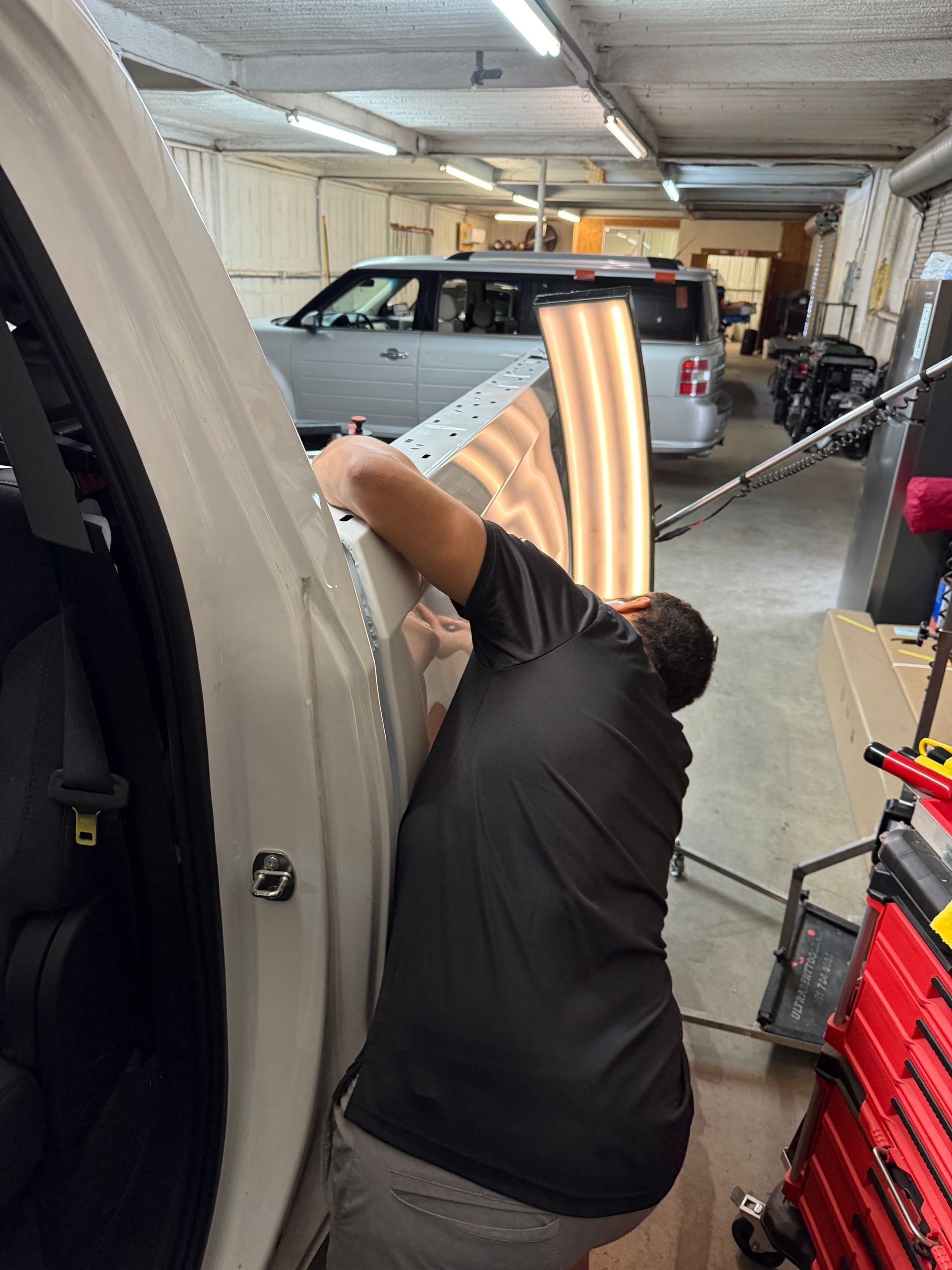
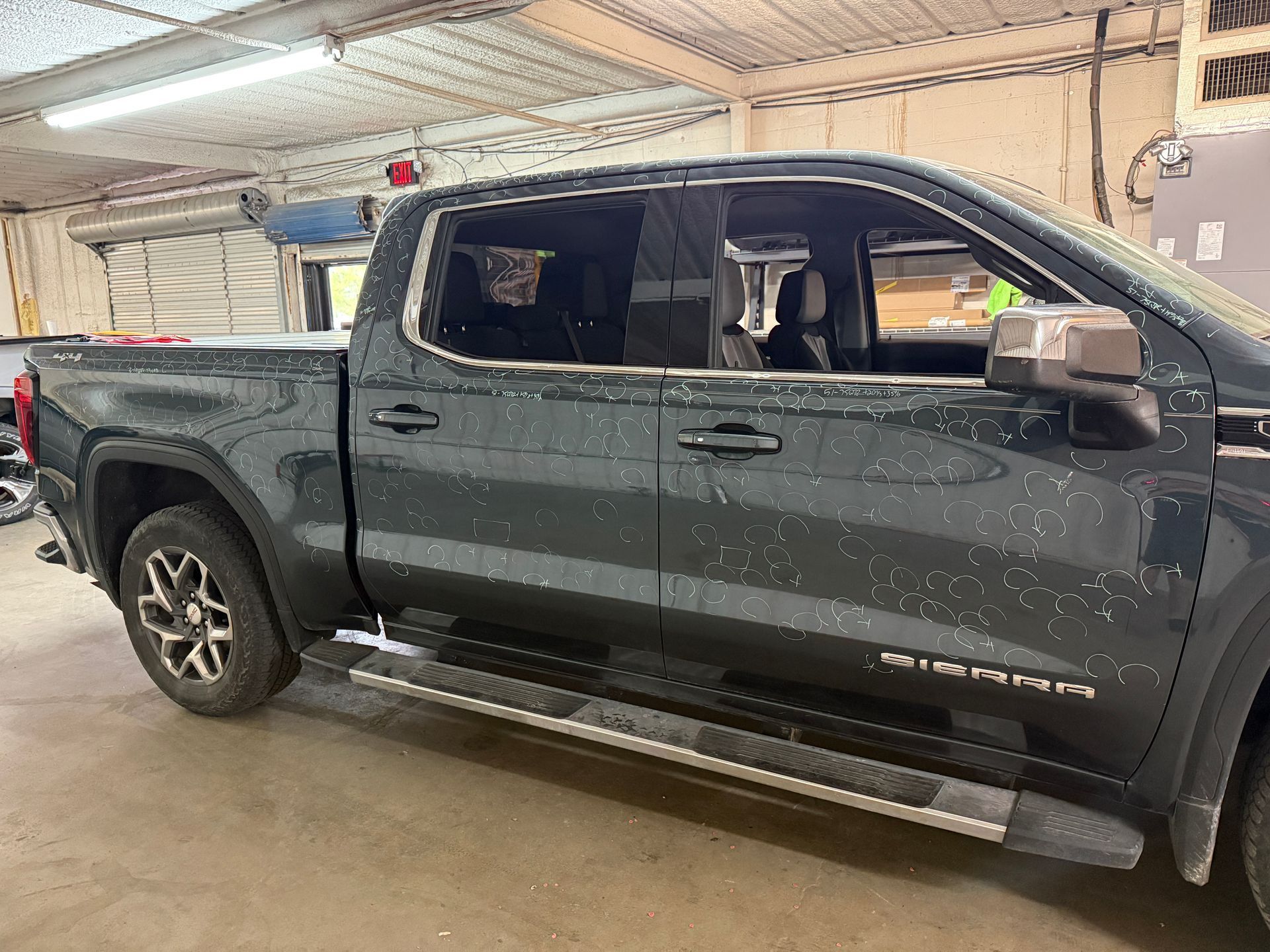
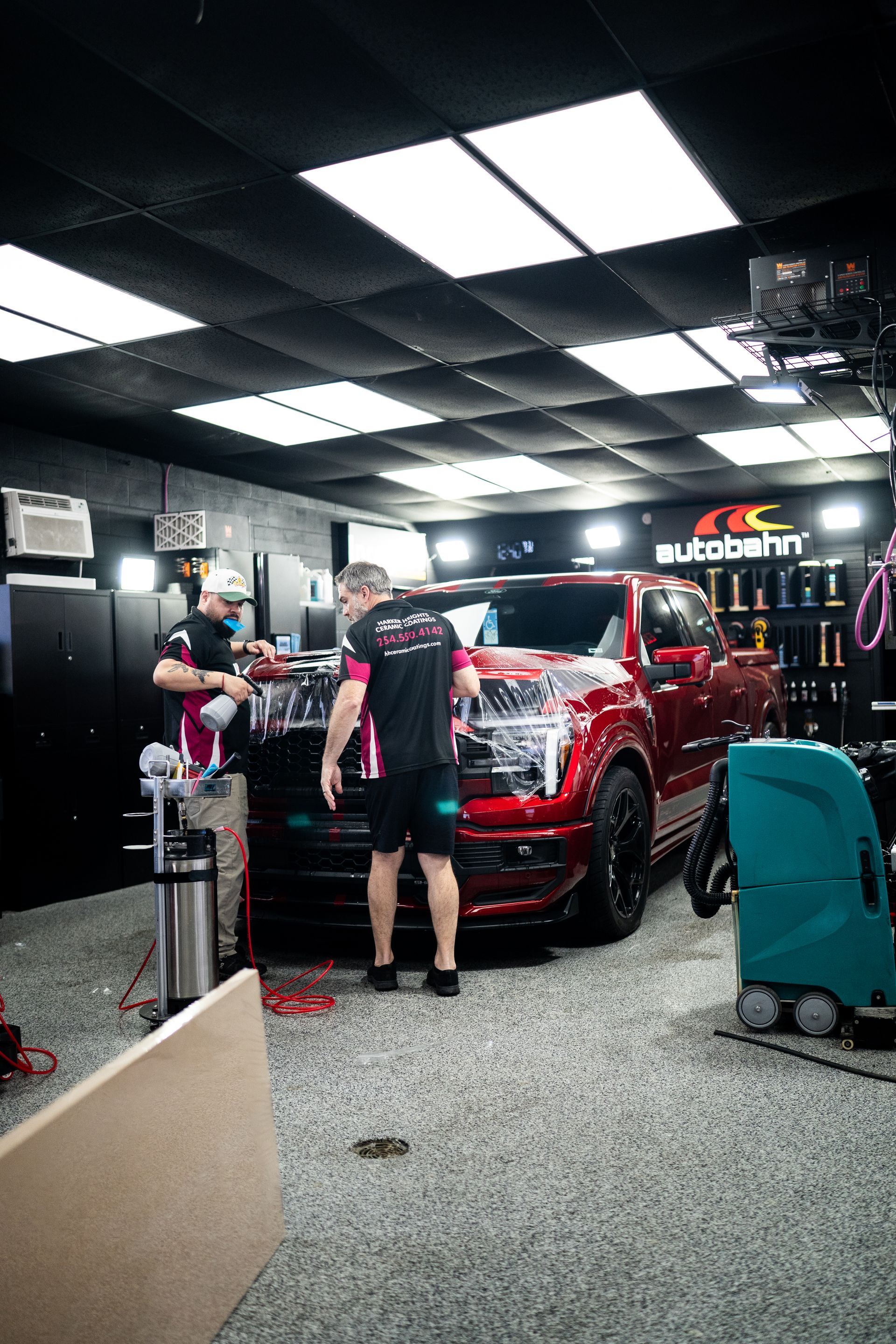
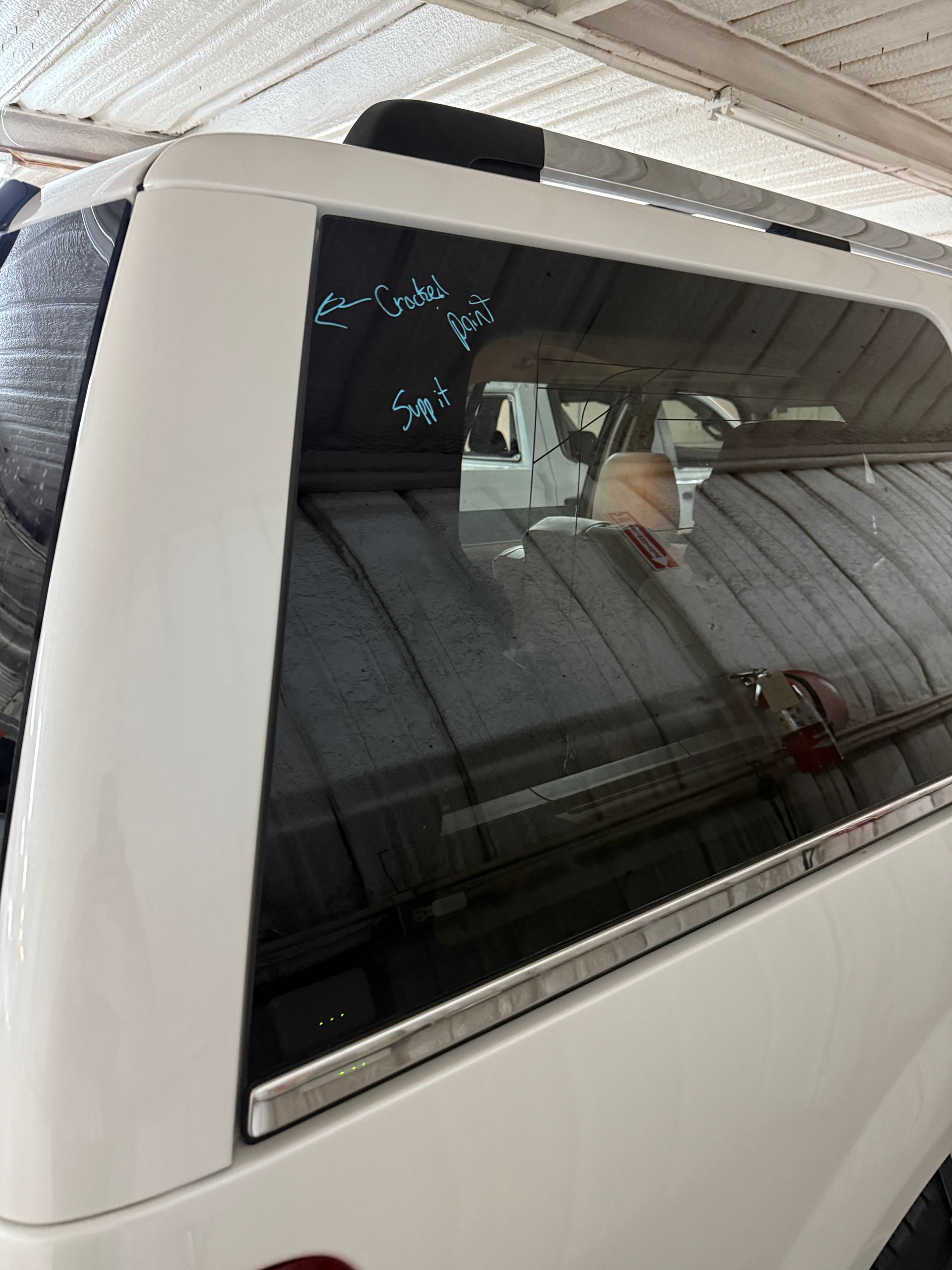
Harker Heights Ceramic Coatings began in 2021 with the goal of providing central Texas with premium vehicle detailing. Every service ensures long-lasting paint enhancement and renewed vehicle value. I believe in open communication and creating a lasting relationship with my clients by providing high-quality services that are tailor-made for your unique vehicle. Through the art of applying professional-grade ceramic coatings, a self-healing clear bra, performing paint correction, and my full-vehicle detailing services, every customer will receive top-tier protection with a showroom-worthy finish.
CALL (254) 550-4142
Get a Quote
service locations
Hours of operation
- Mon - Sun
- -
Harker Heights Ceramic Coatings is open seven days per week!
Contact Info
103 S Main St, Nolanville, TX 76559, United States of America
Follow Us
Harker Heights Ceramic Coatings Designed by the team at Detailers Roadmap, a platform developed for detailing operators across the globe.
All Rights Reserved | 8bitcreative, LLC | Harker Heights Ceramic Coatings


